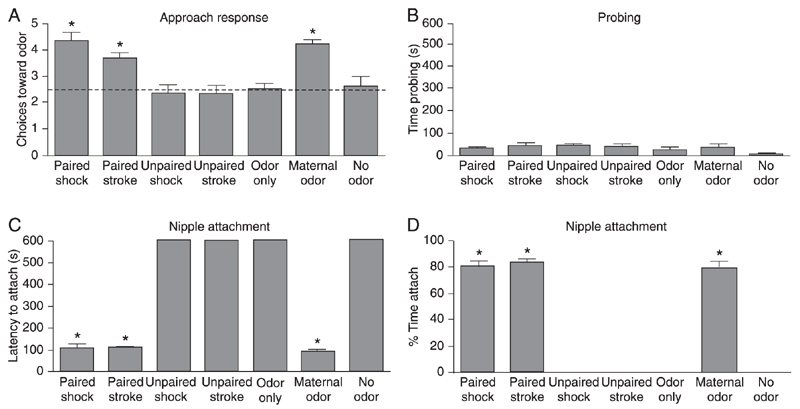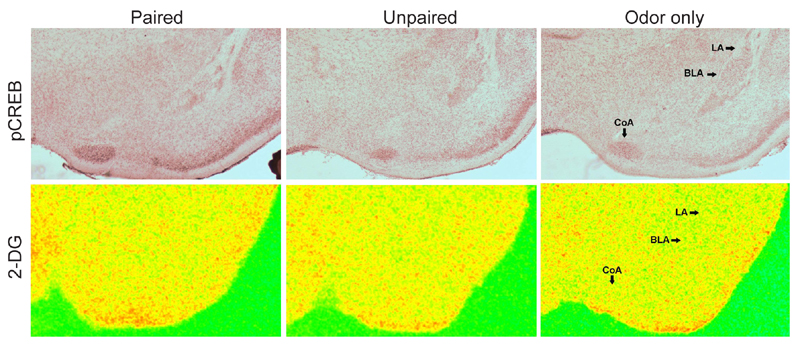Infant rats must learn to identify their mother’s diet-dependent odor. Once learned, maternal odor controls pups’ approach to the mother, their social behavior and nipple attachment. Here we present a review of the research from four different laboratories, which suggests that neural and behavioral responses to the natural maternal odor and neonatal learned odors are similar. Together, these data indicate that pups have a unique learning circuit relying on the olfactory bulb for neural plasticity and on the hyperfunctioning noradrenergic locus coeruleus flooding the olfactory bulb with norepinephrine to support the neural changes. Another important factor making this system unique is the inability of the amygdala to become incorporated into the infant learning circuit. Thus, infant rats appear to be primed in early life to learn odors that will evoke approach responses supporting attachment to the caregiver.
Maternal odor; Olfactory bulb; Norepinephrine; Attachment; Locus coeruleus; Amygdala


